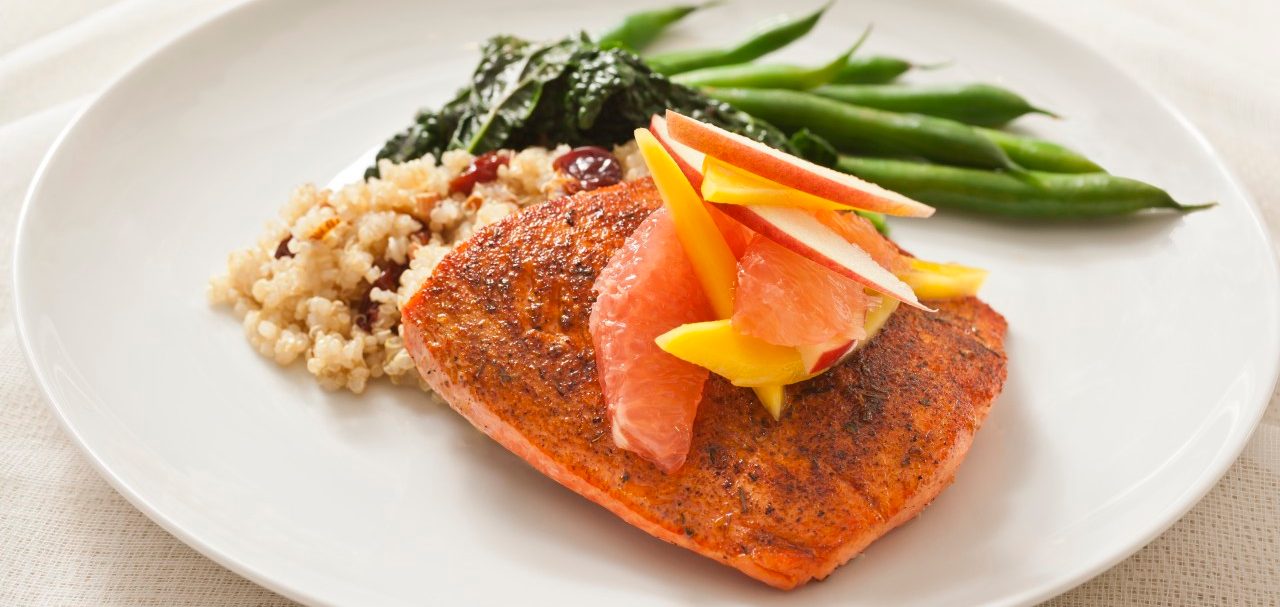Protein-Rich Food

Protein rich food includes much more than meat. Learn what is protein exactly, how much you need, and explore the variety of protein rich food available.
Protein is a necessary component of every cell in your body. It’s a major part of your bones, internal organs, skin, hair, nails, and muscles. And it’s crucial for physical development and normal growth, especially during pregnancy, childhood, and teen years.
In fact, throughout your entire life, you need protein for your body to repair and build body tissues and cells. It’s also important for blood clotting, the production of hormones and enzymes, fluid balance, and a host of other body process.
So, what is protein, exactly? The Food and Drug Administration (FDA) explains it’s made up of organic compounds called amino acids, which are linked together in long chains. The specific ways amino acids are hooked together determine a protein’s structure and function in the body. In all, every type of protein in your body is made up of 20 different amino acids of two types — essential (which must be obtained from food) and non-essential amino acids (made by your body).
YOU MIGHT ALSO LIKE: Healthy Eating Habits
There’s a difference between complete and incomplete proteins
When you think of dietary protein, you may think primarily of meat. But protein rich food includes both plants and animals. The Dietary Guidelines for Americans 2015-2020, based on research from the U.S. Department of Health and Human Services and the U.S. Department of Agriculture (USDA), recommends eating a variety of nutrient-dense protein foods from both plant and animal sources for a healthy diet.
Consuming more protein from vegetable, seafood, and low-fat dairy sources instead of relying heavily on protein from meat (especially the processed type) and processed poultry can have important health benefits — including reducing the risk of developing cardiovascular disease, type 2 diabetes, obesity, and some types of cancers, according to the FDA.
However, if you eat only vegetarian sources of protein, it’s important to understand what protein is complete and which is incomplete:
- Complete proteins provide all the essential amino acids your body needs in adequate amounts. Among animal products, eggs, meat, dairy products, seafood, and poultry provide complete proteins. Soy is also a vegetarian complete protein source.
- Incomplete proteins are unbalanced proteins — eaten alone, they don’t provide enough of one or more of the essential amino acids. Many plant foods (including grains, nuts, beans, and peas) are incomplete protein sources.
- Complementary proteins turn incomplete protein sources into complete ones when you eat them at the same time or even over the course of one day. For example, combining whole wheat bread, which is low in the amino acid lysine, with peanut butter (low in the amino acid methionine) in a sandwich gives you a complete protein rich snack.
Bottom line? Protein rich food can be varied, healthy, and delicious
So, what is protein variety when it comes to planning meals for you and your family? It means consuming several kinds of animal (meat, poultry, seafood, and eggs) or plant (beans, peas, soy products, nuts, and seeds) sources of protein. And it doesn’t have to be a difficult.
Use these tips from the USDA’s MyPlate program for planning a variety of healthy protein meals:
- Experiment with main dishes. Try out new recipes with protein rich food like beans, nuts, or soy.
- Skip meat and poultry and, twice a week, opt for seafood instead. Try a variety of seafood, including salmon, which is high in healthy omega 3 fatty acids and low in mercury.
- Have a high protein, healthy sandwich for lunch. Choose peanut or almond butter, turkey, roast beef, canned tuna or salmon, or peanut butter for sandwiches. But skip deli meats like bologna or salami most of the time (they are loaded with salt and excess fat).
- Have some eggs. Whether scrambled for breakfast or used in an omelet made with veggies, eggs are high in protein and don’t increase your risk of heart disease.
Updated:
May 21, 2019
Reviewed By:
Janet O’Dell, RN